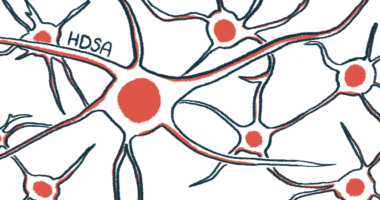Shape Changes in Neostriatum Linked to Clinical Features of Huntington’s

Changes in the shape of a brain region called the neostriatum — involved in motor and cognitive control — are associated with specific clinical features in people with Huntington’s disease at different stages of the disorder, a study has found.
The results, “Striatal morphology and neurocognitive dysfunction in Huntington disease: The IMAGE-HD study,” were published in Psychiatry Research: Neuroimaging.
Huntington’s disease is a genetic neurodegenerative disorder caused by excessive repeats of a portion of DNA, called CAG triplets, within the huntingtin (HTT) gene.
The disease is characterized by motor, psychiatric, and cognitive disturbances, and has several stages, including an initial phase in which patients experience no symptoms of the disorder.
One of the early morphological (shape) changes associated with Huntington’s is the shrinkage of the brain’s neostriatum. It can be found even among pre-symptomatic patients more than a decade before the onset of the first symptoms of Huntington’s, and usually worsens as the disease progresses.
“The neostriatum is a crucial hub … that regulates cognition, emotion, behavior, and motor functions. Structural changes in the striatum may … [lead] to changes in motor function and related cognitive and neuropsychiatric outcomes in [Huntington’s disease],” the investigators said.
Although many studies have reported that the neostriatum undergoes a series of shape changes in patients with Huntington’s, very few studies focused on investigating the possible relationship between these morphological changes and clinical features of the disease.
In this study, an international team of researchers set out to explore the possible relationship between shape changes in the brain’s neostriatum and motor and cognitive impairments associated with Huntington’s disease in a group of patients at different stages of the disorder.
The study, which was part of the Australian IMAGE-HD study, involved 36 pre-symptomatic and 37 early symptomatic patients with Huntington’s disease, as well as 36 age-, sex-, and IQ-matched healthy individuals (controls).
To evaluate shape changes, researchers used magnetic resonance imaging (MRI) scans to segment the brain’s neostriatum and measure its thickness, volume and surface area.
Results showed there were significant differences in shape changes occurring in the neostriatum in all three groups:
- Healthy individuals had larger volumes, increased thickness and surface area compared to both groups of patients with Huntington’s disease;
- Early symptomatic patients had the smallest volumes, lower thickness, and surface area compared to pre-symptomatic patients.
Correlation analyses revealed there was an inverse relation between lower values of thickness and surface area and the number of CAG repeats found in the huntingtin gene sequence, disease burden, and the total motor score of the Unified Huntington’s Disease Rating Scale (UHDRS) in all patients with Huntington’s.
Among early-symptomatic patients, their ability to recognize smells (University of Pennsylvania Smell Identification Test, UPSIT), to read faster (Stroop Word Test) and their motor skills (speeded tapping and self-paced tapping tasks) were all linked to changes in the thickness and surface area of specific regions within the neostriatum.
“[Neostriatal] shape correlated with motor, neurocognitive, and clinical measures … suggesting that the neostriatum is a potentially useful structural basis for characterization of endophenotypes [internal characteristics of the disorder that are not immediately apparent by observation] of HD,” the investigators said.
The team believes that neostriatal morphological alterations throughout time, when correlated to genetic and clinical features, could help monitor disease progression and assess response to clinical interventions.






